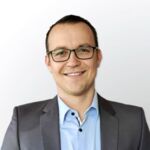Circular Industry
Circularity in heavy industry, foundries, works: analysing, processing and re-valorising refractory and specialist materials
Background
A key priority area for the European area is to increase security and sustainability in the access and use of primary and secondary raw materials, with a focus on those Critical Raw Materials which have been defined as vital for EU industrial value chains and strategic sectors.
Applying technological solutions to transform industrial waste management processes in extractive and energy-intensive industries has the potential to yield rapid and significant results. The potential for impact is clear: extractive industries alone are responsible for 50% of the world’s carbon emissions and more than 80% of biodiversity loss. For energy intensive industries, in most cases the primary raw material production has the highest impact on a product’s carbon footprint. Safe and efficient circular process strategies are needed.
Open data and modelling, standardisation, demonstration, industrial symbiosis and cross-sectoral cooperation are required to de-risk and spread the benefits of research and innovation advances.
Key Project: ReSoURCE
Refractory products are indispensable for all high-temperature processes above 1200°C, such as steel, cement, glass, and nonferrous metal production. Since the refractory lining of a furnace or vessel is designed for a specific material and application, multiple refractory product types, with different chemistries, are combined to achieve the required performance. This poses major challenges for reuse, as the chemical composition of the recycled material is critical if it is to be used again in a refractory.
The ReSoURCE project goal is a comprehensive, advanced sensor-based system for refractory waste sorting and powder handling. Key technologies include LIBS and hyperspectral imaging.If the project is successful, it will enable the robust engineering of an automated sorting equipment that will increase the recycling of refractory breakout material from the current estimate of 7–30% (plus 10% of downcycling) to up to 90%. With approximately 28 million tons of used refractory bricks generated annually, the ecological and societal benefits will be considerable.
Key Project: IS2H4C
Existing heavily industrialised areas are currently incapable of adopting large-scale industrial symbioses in terms of shared technology/ infrastructure use, waste integration, energy and material utilization, as well as expanding through surrounding ecosystems in an inclusive manner for the society despite many of the EU's key strategic priorities in sustainable regional development.
Within this context, IS2H4C proposes an ambitious and efficient innovation and action workplan to develop several solutions for the development of Hubs for Circularity (H4C) in diverse industrial areas of process industry surrounded by rural and/or urban settings in the Netherlands, Germany, Spain, and Turkey. The workplan is shaped by development and deployment of most innovative sustainable technologies and infrastructure integration in four demo hubs and is supported by ground-breaking research on societal, governmental, and business innovation for H4C.
Circular Industry Helix
The Circular Industry Helix is an international Open Innovation community of specialists and stakeholders, including those from the domains of materials science, process engineering, mineral waste recycling and industrial innovation, as well as relevant policy makers, standardisation agents and citizen interest groups. The Helix was initiated to support in validation and steering of the ReSoURCE project, and to accelerate translation of the ReSoURCE project results into cross-sectoral impact for the European economy and its citizens.
This Helix is also linked to the IS2H4C project, by fostering the collaborative ecosystem between the project Hubs in the Netherlands, Germany, Spain, and Turkey, in addition to creating impactful outcomes for the project and its external stakeholders from the industry, academia, society and policy environment.
IS2H4C: Co-funded by the European Union. Views and opinions expressed are, however, those of the author(s) only and do not reflect those of the European Union or HaDEA. Neither the European Union nor the granting authority can be held responsible for them. This project has received funding from the European Union’s Horizon Europe research and innovation programme under grant agreement No 101138473.
Funded by the European Union. Views and opinions expressed are however those of the author(s) only and do not necessarily reflect those of the European Union or the granting authority. Neither the European Union nor the granting authority can be held responsible for them. This project has received funding from the European Union’s Horizon 2020 or Horizon Europe research and innovation programme under grant agreement No 101138473.

Funded by
the European Union
Upcoming Events
551 Experts
248 Organisations
52 Countries
Dr. Valeria Pulieri
"RHI Magnesita are proud to lead this community on circularity in energy-intensive industries including refractories. Industrial-scale waste streams represent significant opportunity to recover value by application of novel technologies and processes."











































